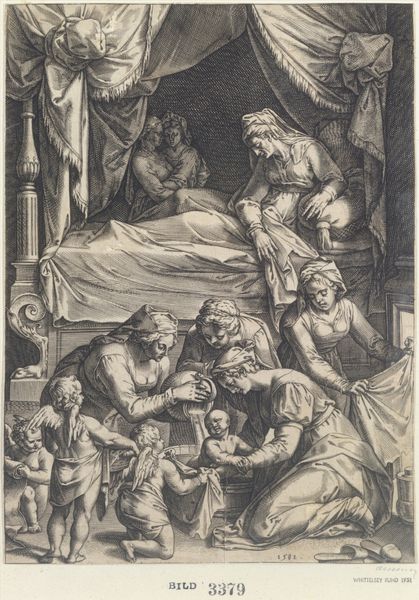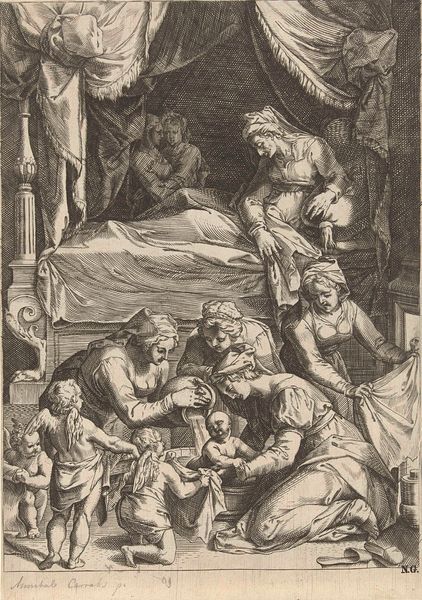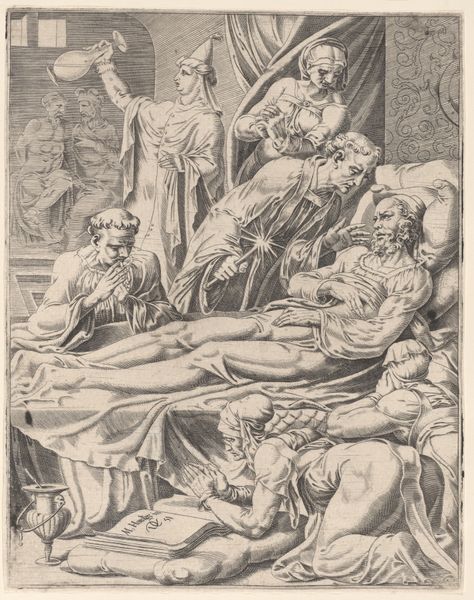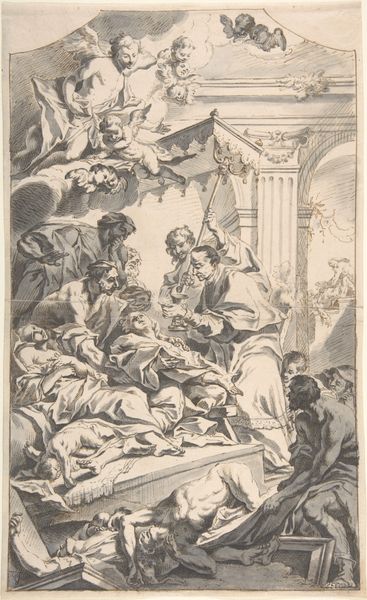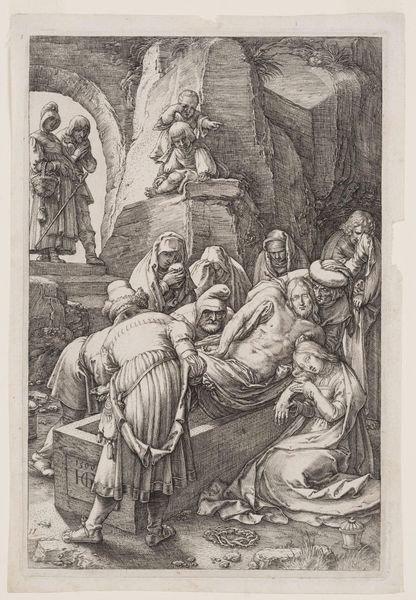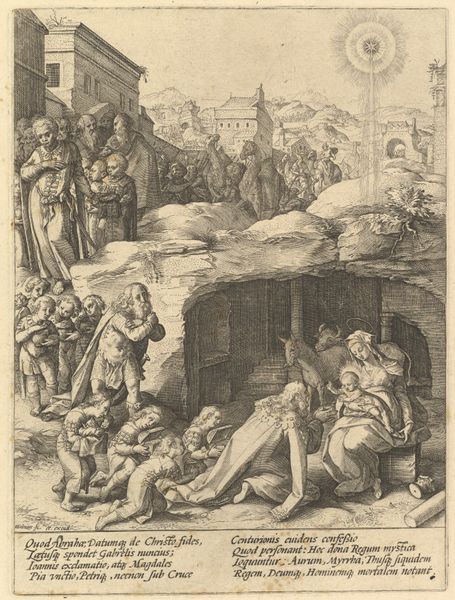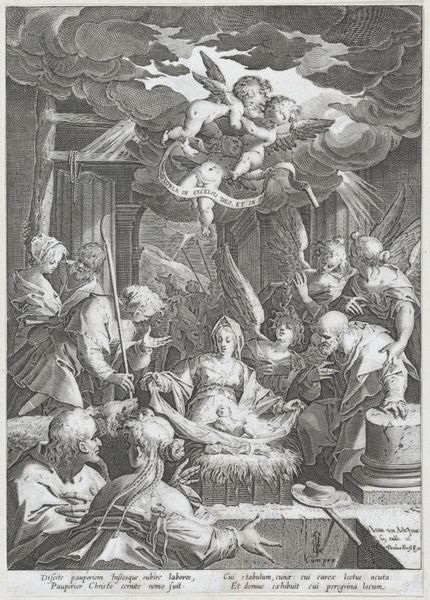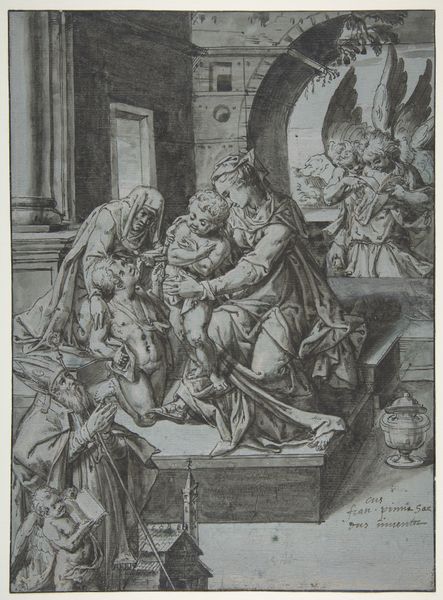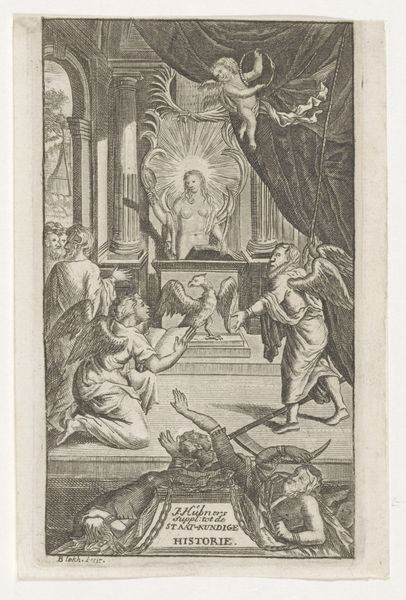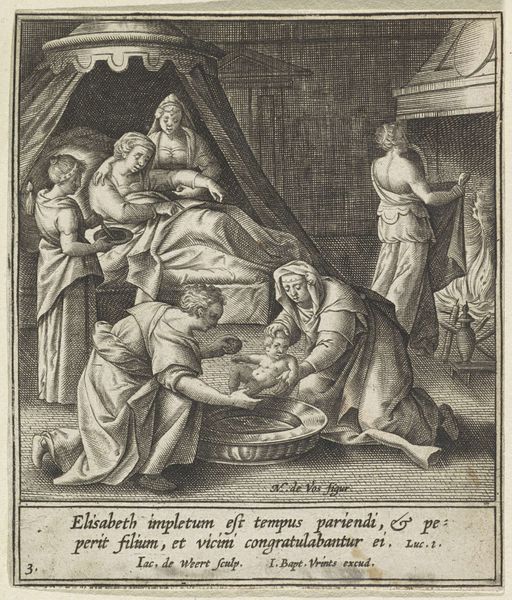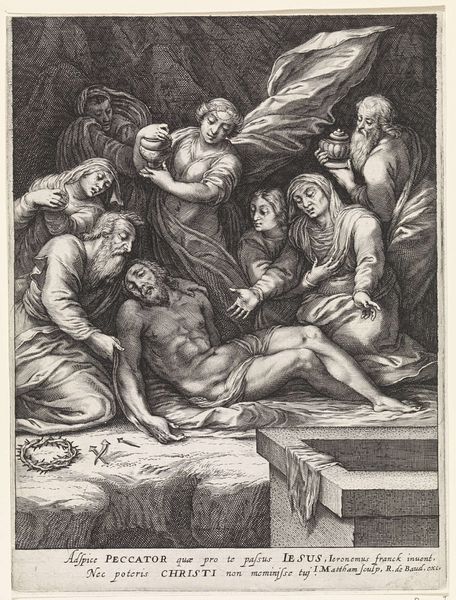
print, engraving
# print
#
figuration
#
history-painting
#
italian-renaissance
#
engraving
Dimensions: height 327 mm, width 205 mm
Copyright: Rijks Museum: Open Domain
Editor: This engraving by Cornelis Cort from 1568, "Birth of the Virgin," shows a flurry of activity. What strikes me is how public the scene is; it feels less like an intimate moment and more like a ceremonial event. What’s your take on this depiction? Curator: Well, you’re right to notice the public element. The Renaissance, particularly in Italy, saw increasing institutional influence on art. Images like this one were not just devotional; they projected power. Think about who commissioned and viewed these prints: were they for private devotion, or were they displayed more publicly, shaping societal perceptions of the Virgin's birth? Editor: That makes sense. It definitely seems staged, not like a candid snapshot. It almost feels… political. Curator: Precisely. The Virgin Mary held a prominent place within the Church, and how her birth was presented visually reinforced theological narratives. The idealized figures, the architectural setting, and the almost performative act of bathing the infant - it all communicates specific ideas about purity, divine favour, and the role of women. Does considering that change how you view the artwork? Editor: Absolutely! Seeing it as part of the Renaissance’s socio-political context illuminates a completely new meaning. I originally thought it was just about celebrating the event, but it's clearly also a tool for asserting religious authority. Curator: Exactly. It is also a business. A successful image is copied and distributed across Europe, it makes its creator and their funders rich, and their opinions pervasive. Now, what can that knowledge inform your approach to other pieces? Editor: That's a very interesting view on history! Thank you, I have something to consider going forward!
Comments
No comments
Be the first to comment and join the conversation on the ultimate creative platform.
